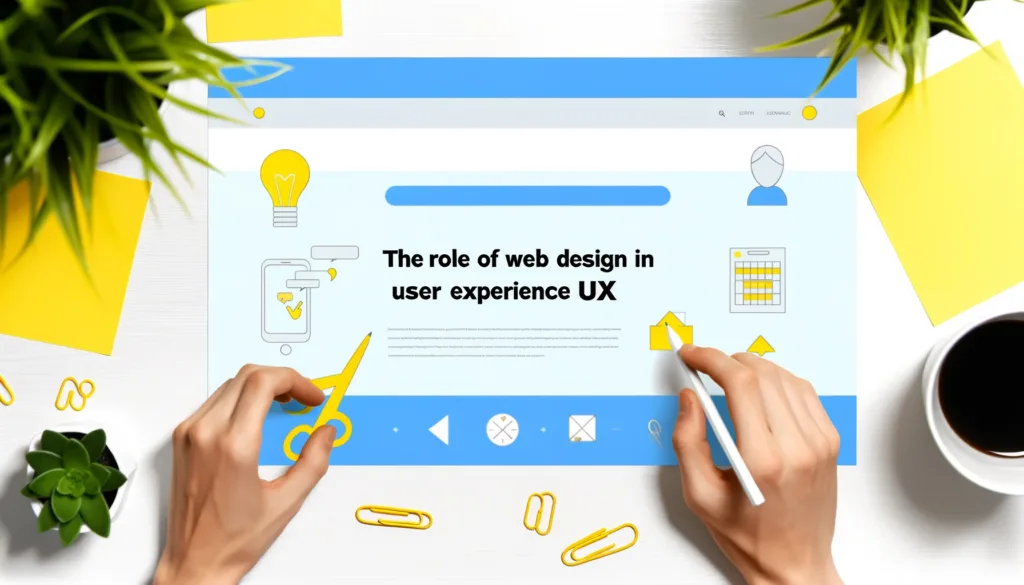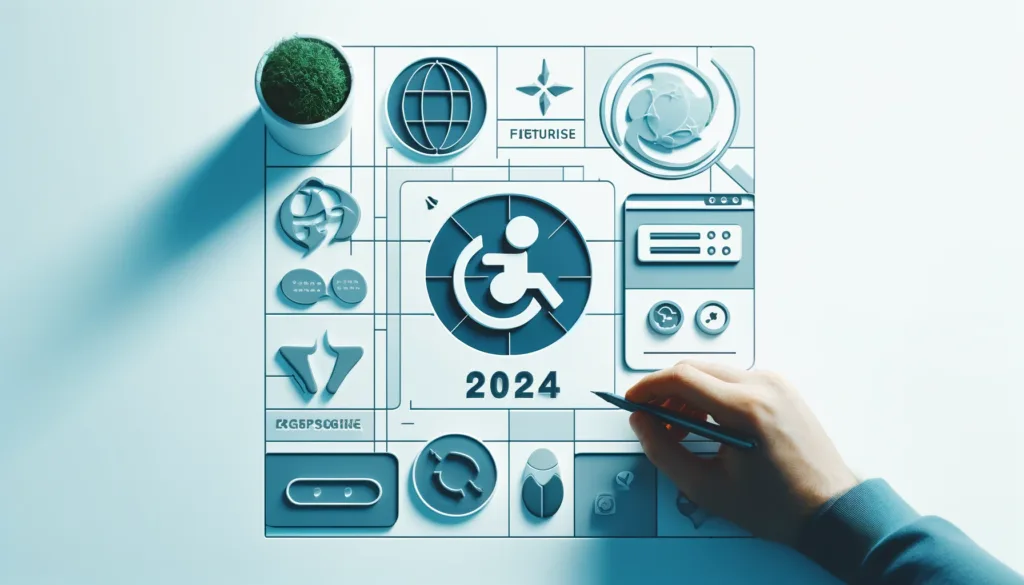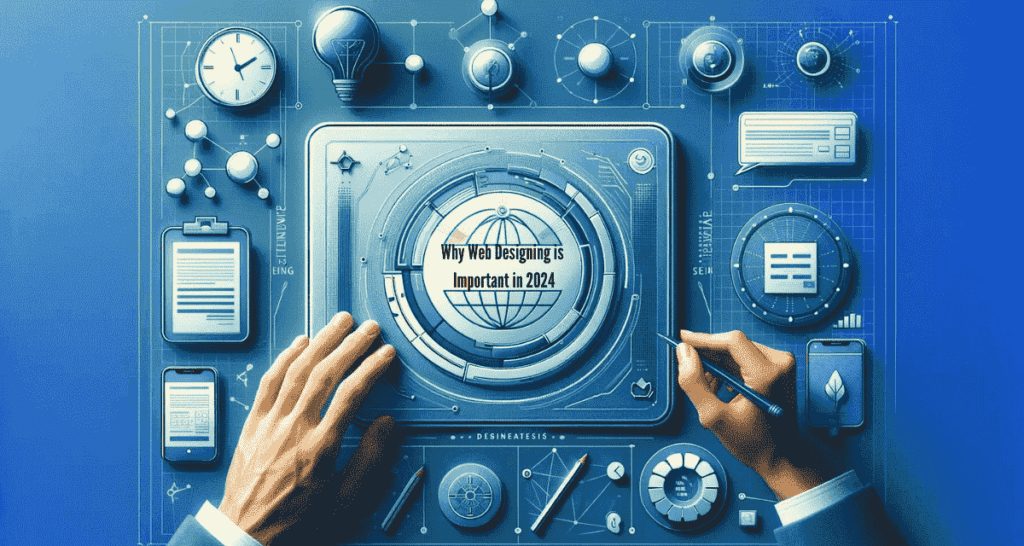Introduction
In the digital era, where the boundaries between the physical and virtual worlds are increasingly blurred, web design stands as a vital element of our online experience. As we step into 2024, the digital transformation witnessed in the last decade has launched web design from a simple aesthetic concern to a fundamental component of digital strategy. This transformation is not just about technology; it’s about how businesses, educators, and individuals connect with the world around them.
The internet is now the primary source of information, commerce, and social interaction for billions of people worldwide. In this context, the first point of contact between a brand and its potential customers is often its website. Here, web design becomes not just about making a site look attractive but about crafting engaging experiences that resonate with visitors, guiding them effortlessly towards taking the desired action – be it making a purchase, signing up for a course, or simply staying informed.
The Evolution of Web Design

A Journey Through Time
The evolution of web design is a testament to the rapid advancements in technology and changing user expectations. In the early days of the internet, web pages were static, text-heavy, and purely informational, with little thought given to user experience or aesthetic appeal. Fast forward to 2024, and web design has become a sophisticated field that combines aesthetics, functionality, and technology to create dynamic, engaging online experiences.
As technology progressed, so did the capabilities of web design. The introduction of CSS (Cascading Style Sheets) in the late 1990s marked a significant leap forward, allowing designers to separate content from design and thus giving them greater control over the look and feel of websites. The early 2000s saw the rise of Flash, which brought animations and interactivity to the web, albeit with its own set of limitations such as poor search engine visibility and compatibility issues.
The advent of HTML5, CSS3, and JavaScript frameworks in the 2010s revolutionized web design further, enabling the creation of rich, interactive websites that work seamlessly across various devices and platforms. These technologies laid the groundwork for modern web design practices, emphasizing responsiveness, user experience, and mobile-first design.
Technology Meets Creativity
The fusion of cutting-edge technology and creative design has led to the emergence of web design as a key strategic tool for businesses. Websites are no longer static brochures but dynamic entities that engage, inform, and persuade users. The role of the web designer has evolved accordingly, from one focused on creating visually pleasing layouts to one where they act as a bridge between technology and the user experience.
The Role of Web Design in User Experience (UX)

First Impressions Matter
The saying, “You never get a second chance to make a first impression,” holds particularly true in the realm of web design. Within the first few seconds of landing on a website, users form an opinion based on its appearance, usability, and loading time. This brief moment is crucial and can determine whether a visitor stays to explore or leaves, possibly never to return. In 2024, with the vast amount of information and websites available, making a strong, positive first impression through superior web design is more important than ever.
The Impact on Engagement
Engagement is the lifeblood of online success. A website that’s designed with the user’s needs and preferences in mind is far more likely to keep visitors engaged. This means not only attractive visuals but also intuitive navigation, fast loading times, and content that’s easy to read and understand. Websites that excel in these areas see significant benefits, including lower bounce rates, longer time on site, and higher conversion rates.
Statistics support this: websites that prioritize UX design report up to a 200% increase in conversion rates. Furthermore, a study has shown that a well-designed user interface could raise your website’s conversion rate by up to 400%. It’s clear that investing in quality web design is investing in your site’s success.
Web Design and Accessibility in 2024

Making the Web Inclusive for All
In 2024, the digital world continues to move towards inclusivity, making web accessibility not just a nice-to-have but a must-have. Accessible web design ensures that all users, including those with disabilities, can access, understand, navigate, and interact with the web. This includes designing websites that are compatible with assistive technologies, such as screen readers, and ensuring that all users can experience the content fully, regardless of their physical or cognitive abilities.
Incorporating accessibility into web design from the outset is not only a matter of social responsibility but also widens your audience, potentially boosting your site’s reach and impact. Moreover, accessible websites tend to be more search engine friendly, improving your SEO efforts and online visibility.
Legal and Ethical Considerations
The legal landscape around web accessibility has become more defined in recent years. Various countries and regions have established laws and regulations requiring digital content to be accessible to all users. For instance, the Web Content Accessibility Guidelines (WCAG) have become the standard for web accessibility, outlining how to make web content more accessible to people with disabilities.
Failing to comply with these standards can lead to legal consequences, including lawsuits and fines. But beyond compliance, there’s a strong ethical argument for web accessibility. It’s about providing equal access to information and opportunities, which is fundamental in a society that values inclusivity and equality.
Implementing Accessibility Features
Making a website accessible involves several key practices:
Text Alternatives: Offering text options for non-text content so that it can be transformed into other formats like large print, braille, speech, symbols, or simpler language.
Keyboard Navigation: Ensuring that all functions can be performed via a keyboard for those unable to use a mouse.
Adequate Contrast: Designing with sufficient contrast between text and background to make content clear and readable.
Responsive Design: Creating websites that can be used across a range of devices and screen sizes, accommodating users with different types of visual impairment.
Clear Navigation and Labels: Making it easy to navigate the website with clear, logical structures and descriptive labels for links and actions.
By adopting these and other accessibility principles, web designers can create more inclusive digital experiences that welcome a wider audience.
Web Design as a Marketing Tool

Digital Marketing Synergy
In the digital age, a company’s website often serves as the heart of its marketing strategy, acting as the ultimate destination for leads generated from various channels such as social media, email marketing, or search engine optimization (SEO). A well-designed website can amplify these efforts, creating a cohesive digital experience that aligns with the brand’s identity and marketing goals.
Effective web design enhances every aspect of a marketing strategy. For instance, a clear and intuitive navigation structure can lead visitors seamlessly through a sales funnel, while compelling calls-to-action (CTAs) can increase conversion rates. In essence, every design element should work in harmony to support the overarching marketing objectives, whether it’s building brand awareness, generating leads, or driving sales.
This is written by our experts on The Role of Web Design in Digital Marketing Strategy.
SEO and Web Design
Search Engine Optimization (SEO) and web design are intrinsically linked. A visually appealing site is useless if potential customers cannot find it. Key web design elements significantly impact a site’s visibility on search engines. For example, site speed is a critical SEO factor; faster websites not only provide a better user experience but are also favored by search engines.
Moreover, mobile responsiveness, a fundamental principle of mobile-first design, is crucial for SEO. Google’s mobile-first indexing implies that the search engine primarily utilizes the mobile version of content for indexing and ranking purposes.
Therefore, a website optimized for mobile devices is more likely to rank higher in search results, attracting more organic traffic.
How Web Design Influences SEO in 2024. This is important to know before working on it.
Visual Branding
Your website is often the first point of contact between your brand and potential customers, making it a prime opportunity to make a strong visual impression. Through the strategic use of colors, typography, imagery, and overall layout, web design can convey your brand’s personality and values at a glance.
Consistent visual branding across all pages helps reinforce your brand identity, making it more memorable to visitors. This consistency extends to all digital marketing materials, ensuring that your brand is easily recognizable across different platforms, thereby strengthening your marketing efforts.
Converting Visitors to Customers
Ultimately, the goal of combining web design with marketing is to convert visitors into customers or followers. An effective website design guides visitors through a journey, from awareness to interest, and finally, to action. By strategically placing engaging content, helpful information, and persuasive CTAs, web design can significantly boost conversion rates, turning passive visitors into active customers or supporters.
Principles of Sustainable Web Design
Sustainable web design focuses on creating websites that are efficient, clean, and accessible. The aim is to enhance user experience and performance while minimizing environmental impact. Key principles include:
Efficiency: Streamlining content and functionality to reduce data transfer and processing requirements.
Optimization: Compressing images and using modern, efficient coding practices to decrease page load times and data usage.
Green Hosting: Selecting web hosting services that are powered by renewable energy to host websites.
Incorporating these principles not only contributes to a more sustainable internet but can also improve site speed and user experience, aligning ecological responsibility with business objectives.
The Importance of Web Designers in Advocating for Sustainability
Web designers play a crucial role in the movement towards a more sustainable internet. By advocating for and implementing eco-friendly design practices, designers can influence the industry, encouraging a shift towards more responsible and sustainable digital solutions. Education and awareness are key, as both designers and clients need to understand the importance and benefits of sustainable web design.
Eco-Friendly Design in Practice
Implementing sustainable practices in web design involves choices at every stage of the design and development process. For example, selecting fonts that require less data to load, reducing the reliance on third-party services that add overhead to your site, and employing lazy loading for non-essential resources can all contribute to a more eco-friendly website.
Conclusion
As we’ve navigated through the intricacies of web design in 2024, it’s clear that web design transcends mere aesthetics. It’s a strategic blend of art and science, deeply intertwined with user experience, technology, marketing, and now, sustainability. The evolution of web design from simple, static pages to dynamic, interactive experiences reflects broader shifts in technology, society, and how we interact with the digital world.
Author
-

Olivia, our Design Professional , crafts digital landscapes that captivate and resonate. With an artistic flair and a penchant for user experience, he turns visions into visually stunning, user-friendly websites.
View all posts




